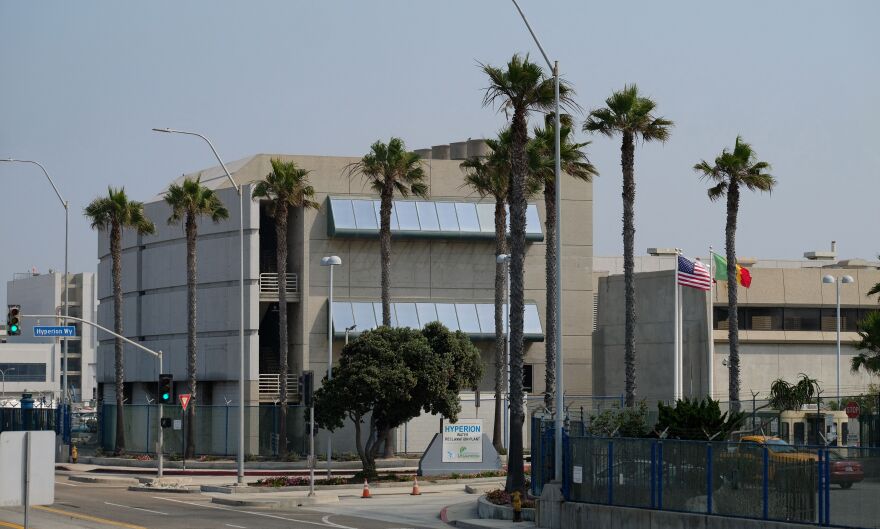Truth matters. Community matters. Your support makes both possible. LAist is one of the few places where news remains independent and free from political and corporate influence. Stand up for truth and for LAist. Make your year-end tax-deductible gift now.
Here’s What You Need To Know About That Antibiotic-Resistant Bacteria Found In LA Wastewater

Antibiotic-resistant “superbugs” capable of resisting last-resort treatment have been found for the first time in Los Angeles County wastewater.
How they were found
The bacteria, found in local wastewater samples, are genetically resistant to colistin, an antibiotic that’s typically used when other antibiotic treatment fails. They were discovered by Adam Smith, an associate professor of environmental engineering at USC.
Smith said he cultured two different bacteria that were resistant to colistin.
“Both of those are known as opportunistic pathogens, meaning that they wouldn't cause an infection in a healthy individual,” he said. “But if you're immunocompromised, they could be concerning.”
Why antibiotic resistance is so worrisome
Smith said what is especially worrisome is that the bacteria contained what he calls “mobile” genetic elements, meaning they can be transmitted to other bacteria, making them also antibiotic-resistant.
“We should be wary of this increase in antibiotic resistance in the community, and it could be spreading,” Smith said. “It's something that we need to start thinking about more, because some of these antibiotic stewardship programs kind of took a backseat during the pandemic, for good reason.”
Antibiotic stewardship refers to ongoing public-health efforts to decrease antibiotic overuse and over-prescription.
The first in time in L.A.
L.A. County health officials say that while colistin-resistant bacteria has been found all over the world, it’s the first time it’s been found lurking in local wastewater.
Smith said he began sampling wastewater from two local treatment plants in early 2020, initially monitoring for COVID-19. He began this particular study in September of that year. The colistin-resistant pathogens emerged soon after.
“We found that resistance emerged in November of 2020 in L.A. County wastewater,” Smith said. “And then we saw a significant rise in 2021 and then also in 2022.”
Smith took the wastewater samples from the Hyperion Water Reclamation Plant in Playa del Rey and the Joint Water Pollution Control Plant in Carson. Together, the two plants serve about 7.5 million residents.
“I think this discovery shows … that wastewater surveillance is a very real type of surveillance that public health can do … to look at what organisms are circulating among the GI tracts of the humans in our jurisdiction,” said Dawn Terashita, associate director for the Acute Communicable Disease Control Program with L.A. County’s public health department.
There have been some rare cases of antibiotic-resistant bacterial infections reported in Los Angeles County in recent years, she said, as far back as 2016.
What you can do
One thing people can do to protect themselves and others is to be responsible about antibiotic use, Terashita said, and to remember that antibiotics are used for bacterial infections, not viral ones.
“One of the things is to consult with their clinician if they think they need antibiotics or if they're taking antibiotics,” Terashita said. “People should always take antibiotics as prescribed and as ordered by their physicians, they should take them for the entire course, and take them as they should be, as instructed. They should also not demand antibiotics when they don't need antibiotics.”
USC’s Smith added that he’d also like to see wastewater surveillance for pathogens expanded, “so that we're better monitoring community health.”







